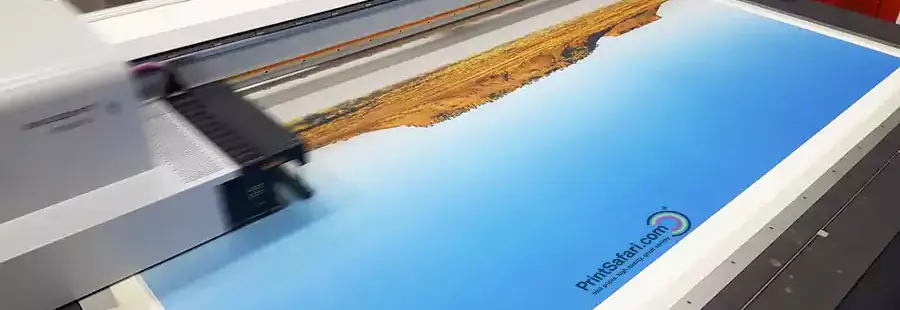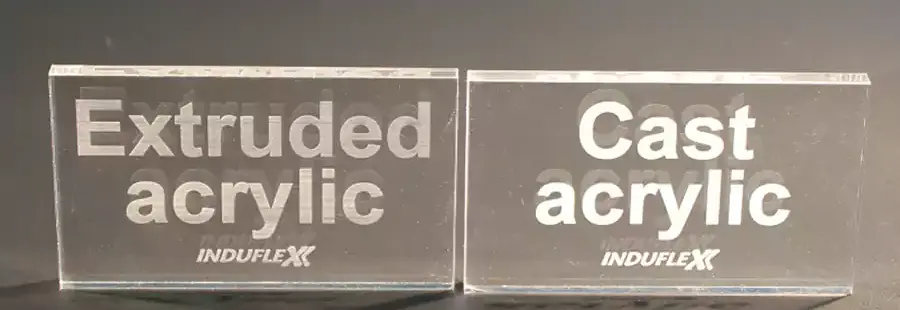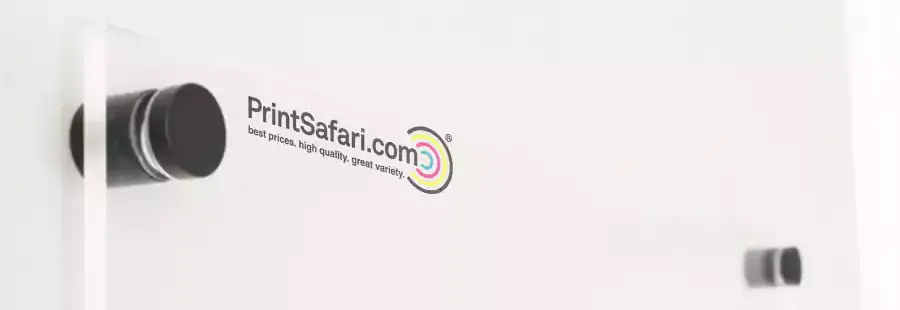Understanding Acrylic Photo Printing
Acrylic photo printing is a modern and innovative way of displaying your favorite images on a sleek, glossy surface. Acrylic prints, also known as acrylic glass print or HD acrylic print, are made by printing your image on high-quality photo paper and bonding it to a thick acrylic sheet. The result is a stunning, vibrant print that looks like it is floating on the wall.

This article will give a brief understanding of acrylic printing. Keep reading to learn more!
The Basics of Acrylic Photo Printing
Acrylic photo printing is a process that involves printing your image on high-quality photo paper and then bonding it to a thick sheet of acrylic glass. The acrylic glass is a protective layer that enhances your image’s color, clarity, and depth. They also add a glossy and reflective finish that gives your print a modern and elegant look.
Printing Process
The printing process for acrylic prints involves two main steps: printing your image on high-quality photo paper and bonding it to thick acrylic glass. The photo paper can be either glossy or metallic, depending on your preference and the effect you want to achieve. The acrylic glass sheet can be cast or extruded, which we will explain later.
The bonding process uses a special adhesive that creates a seamless and durable connection between the paper and the acrylic glass. The adhesive also prevents air bubbles or dust particles from getting trapped between the layers. The bonding process can be face mounting or direct printing, which we will also explain later.
Color Management and Calibration
One of the most important aspects of acrylic prints is color management and calibration. This means ensuring that the colors of your image are accurately reproduced on the final print. To achieve this, you need to use a calibrated monitor and printer and a color profile that matches the photo paper and the acrylic glass sheet you are using.
A calibrated monitor has been adjusted to display colors correctly according to a standard color space, such as sRGB or Adobe RGB. A color-managed workflow uses the same color space throughout the entire process, from capturing your image to editing and printing it. This ensures that there are no color shifts or inconsistencies along the way.
Similarly, a color profile is a data set describing how colors are represented on a specific device or medium. Using a color profile, you can ensure that the colors you see on your monitor are the same as those printed on your photo paper and bonded to your acrylic glass sheet. This way, you can avoid unwanted color shifts or inconsistencies in your final print.
Image Resolution and DPI
Another important aspect of acrylic prints is image resolution and DPI (dots per inch). Image resolution refers to the number of pixels that make up your image, while DPI refers to the number of dots that make up an inch of your print. The higher the resolution and DPI, the sharper and clearer your image.
To print on acrylic, you need a high-resolution image with at least 300 DPI at the size you want to print. For example, if you want to print an 8 x 10-inch acrylic photo print, you need an image with at least 2400 x 3000 pixels. If your image has a lower resolution or DPI than required, it will look blurry or pixelated on your final print.
Color Space and Gamut
Color space and gamut are two terms that describe the range of colors that can be displayed or printed by a device or medium. Color space is a mathematical model that defines how numbers represent colors. Similarly, the gamut is the subset of colors a device or medium can reproduce within a color space.
For example, RGB (red, green, blue) is a color space used by monitors and digital cameras, while printers use CMYK (cyan, magenta, yellow, black). Each color space has its gamut, meaning that some colors can be displayed or printed by one device or medium but not another.
To print on acrylic, a designer should use a color space and gamut that match your printer’s and photo paper’s capabilities. For example, if you use glossy photo paper, you must use an RGB color space with a wide gamut that can reproduce vibrant and saturated colors. If you use metallic photo paper, you must use an RGB color space with a narrower gamut that can reproduce metallic and reflective effects.
Image File Formats
Image file formats are another factor to consider when printing on acrylic. Image file formats are different ways of storing and compressing image data, such as JPEG, PNG, TIFF, or RAW. Different file formats have different advantages and disadvantages regarding quality, size, compatibility, and flexibility.
ou should use an uncompressed or lossless file format for acrylic printing, such as TIFF or RAW. These file formats preserve your image’s details and colors without any degradation or artifacts. They also allow you to edit your image without losing any quality. Avoid using compressed or lossy file formats, such as JPEG or PNG, as they may reduce the image quality and introduce noise or banding.
The best file format for acrylic photo printing is TIFF (Tagged Image File Format). TIFF is a file format that uses lossless compression to preserve the quality and details of your image without increasing its size too much. TIFF is compatible with most printers and photo editing software and supports various color spaces and bit depths.

Different Types of Acrylic Used in Printing
Acrylic is a synthetic material made from polymethyl methacrylate (PMMA), a type of plastic. Acrylic is also known as plexiglass, perspex, lucite, etc. Acrylic is widely used in various industries and applications, such as signage, furniture, art, etc.
Two main types of acrylic are used in photo printing: cast acrylic and extruded acrylic. Each type has its characteristics, advantages, and disadvantages.
1. Cast Acrylic
Cast acrylic is made by pouring liquid acrylic into molds and letting it harden. It has a higher optical clarity than extruded acrylic, which means less distortion and more light transmission. It also has a higher molecular weight, making it more resistant to chemicals and temperature changes. Cast acrylic is more expensive and harder to cut than extruded acrylic but is also more durable and stable.
Cast acrylic is the preferred type of acrylic for photo printing because it offers better optical clarity, color accuracy, and light transmission than extruded acrylic. Cast acrylic also has a smoother and glossier surface than extruded acrylic, which enhances the appearance and depth of your image.
2. Extruded Acrylic
Extruded acrylic is made by pushing molten acrylic through a die and cutting it into sheets. It has a lower optical clarity than cast acrylic, which means it has more distortion and less light transmission. It also has a lower molecular weight, making it more prone to chemicals and temperature changes.
Extruded acrylic is cheaper for photo printing because it is easier and faster to produce than cast acrylic. Extruded acrylic also has a thinner and lighter profile than cast acrylic, which makes it easier to handle and mount. However, extruded acrylic has lower optical clarity, color accuracy, and light transmission than cast acrylic, affecting your image’s quality and appearance.

Advantages of Acrylic Photo Prints
Acrylic photo prints have many advantages over other materials, such as canvas or metal prints. Some of the main advantages are:
Enhanced color vibrancy and clarity
Acrylic prints have a glossy and smooth surface that reflects light and enhances your image’s color vibrancy and clarity. The acrylic layer also acts as a magnifying glass, adding depth and dimensionality to your print. The result is a stunning and vivid print that looks like it is printed on acrylic glass.
Increased depth and dimensionality
Acrylic prints have a thick and solid layer of acrylic that adds depth and dimensionality to your print. The acrylic layer also creates a 3D effect that makes your image pop out from the wall mount. The result is a striking and eye-catching print that looks like it is floating in the air.
Durability and resistance to fading
Acrylic prints are durable and resistant to fading, as they are made of high-quality materials that can withstand scratches, impacts, and UV rays. The acrylic layer protects your image from moisture, dust, and dirt, which can damage or degrade your print over time. The result is a long-lasting and resilient print that can last for decades.
Protection against UV rays and moisture
Acrylic photo prints are protected against UV rays and moisture, as they are made of materials blocking or absorbing harmful radiation and water. The photo paper used in acrylic prints is usually coated with a UV-resistant laminate that prevents fading and discoloration. The acrylic layer also acts as a barrier that prevents moisture from reaching your image. The result is a safe and secure print that can be displayed in any environment.

Understanding Acrylic Mounting Techniques
Face Mounting
Face mounting is a technique in which your image is printed on photo paper and then bonded to the back of an acrylic glass. The front side of the acrylic glass is then attached to the wall using adhesive or hanging hardware.
Face mounting is the most popular mounting technique for acrylic prints because it offers the best optical clarity, color accuracy, and light transmission for your image. Face mounting also creates a sleek and modern look for your HD acrylic print that complements any decor style.
However, face mounting also has some drawbacks. Face mounting requires precise alignment between your image and the acrylic glass to avoid gaps or bubbles between the layers. Face mounting also exposes the edges of the acrylic glass to dust and dirt that can accumulate over time.
Standoff Mounting
Standoff mounting is a technique where your image is printed on photo paper and then bonded to an aluminum composite panel (ACP). The ACP is then attached to the wall using metal standoffs that create a gap between your print and the wall mount.
Standoff mounting is another popular mounting technique for acrylic prints because it offers sturdy and durable support for your print that can withstand any weather conditions. Standoff mounting also creates an elegant and professional look that adds depth and dimensionality to your image. The gap created by the standoffs gives a floating effect to your acrylic print, making it a stunning wall art.
Flush Mounting
Flush mounting is a technique where your acrylic print is directly mounted onto the wall using adhesive or hanging hardware. Unlike face or standoff mounting, there is no additional layer between your print and the wall.
Flush mounting provides a clean and seamless look, as your acrylic print appears to be integrated into the wall. It is popular for minimalist and contemporary settings where a sleek and streamlined appearance is desired.

Factors to Consider When Printing on Acrylic
When printing on acrylic, there are several factors to consider to ensure the best results:
Image Selection
Choose high-resolution images with vibrant colors and sharp details. Images with low resolution or poor quality may appear blurry or pixelated when printed on acrylic.
Size and Aspect Ratio
Consider your image’s size and aspect ratio for the desired acrylic print size. Adjustments may be needed to ensure a proper fit and avoid cropping or stretching.
Lighting Conditions
Consider the lighting conditions where the acrylic print will be displayed. Different lighting can affect the perception of colors and overall image appearance.
Viewing Distance
Determine the typical viewing distance for your acrylic prints. This will help you select an appropriate resolution and image sharpness to ensure optimal viewing experience.
Color Correction
Make any necessary color adjustments to your image before printing. This can help ensure accurate color reproduction and avoid unexpected color shifts.

Care and Maintenance of Acrylic Prints
Proper care and maintenance of your acrylic prints will help preserve their beauty and extend their lifespan. Here are some tips:
Cleaning Techniques and Materials
- Use a microfiber or soft, lint-free cloth to gently wipe the acrylic print surface. Avoid using abrasive materials or harsh chemicals that can scratch or damage the acrylic.
- If there are stubborn stains or fingerprints, moisten the cloth with a mild soap solution or a specialized acrylic cleaner. Gently wipe the affected area and then dry it with a clean cloth.
- Regularly dust your HD acrylic prints using a dry, soft cloth or a feather duster. This helps prevent the buildup of dirt and particles that can affect the clarity of the print.
UV Protection and Fading Prevention
- Display your acrylic print away from direct sunlight or intense artificial light sources. Prolonged exposure to UV rays can cause fading or discoloration over time.
- Consider using UV-blocking film or coatings on your windows if your acrylic print is exposed to direct sunlight. This helps reduce the amount of harmful UV rays reaching the print.
- If possible, rotate the display location of your acrylic print periodically to distribute the exposure to light evenly and minimize the risk of fading.
Handling and Storage Guidelines
- When handling your acrylic print, use clean and dry hands to avoid leaving fingerprints or smudges on the surface. Wear lint-free gloves to protect the print from oils and dirt if needed.
- Store your acrylic print in a cool and dry environment, away from extreme temperatures, humidity, and direct sunlight. This helps prevent warping, cracking, or other damage to the print.

Comparisons and Considerations: Acrylic Print vs. Other Printing Materials
When choosing between acrylic prints, canvas prints, or metal prints, consider the following factors:
1. Cost Considerations
HD acrylic print generally falls within the mid to high price range compared to canvas and metal photo prints. The print size, mounting options, and the type of acrylic used influence the cost.
2. Longevity and Durability
Acrylic prints offer excellent durability and longevity. The acrylic sheet protects against fading, UV rays, and moisture, ensuring your print remains vibrant and preserved for years. Canvas photo prints may be prone to sagging or stretching over time, while metal photo prints can be susceptible to scratches or dents.
3. Visual Impact and Style
Highest-quality acrylic prints provide a glossy, sleek appearance that enhances color vibrancy and creates a modern, high-end look. Canvas prints offer a more traditional and textured feel, while metal photo prints offer a contemporary and metallic sheen compared to HD acrylic prints.
4. Light Reflection and Viewing Experience
Acrylic prints have a glossy surface that reflects light, creating a vibrant and dynamic viewing experience. Canvas prints have a more matte surface that diffuses light, resulting in a softer and more subdued visual effect. Metallic photo paper has a reflective surface that adds a unique and metallic sheen to the image.

Showcase Your Photos in Stunning Clarity with Custom Acrylic Prints
Acrylic photo prints bring a sleek, modern touch to any space—whether it’s your home, office, or gallery. Not all acrylic prints deliver the same quality, but when you choose the right provider, you’ll enjoy vibrant colors, sharp details, and lasting durability.
Easily turn your favorite images into stunning acrylic masterpieces with customizable options like size, mounting styles, and acrylic finishes to match your vision perfectly.
High-quality printing processes and precision craftsmanship ensure your photos look their absolute best. Whether you’re decorating a space or showcasing professional photography, acrylic prints offer a contemporary, eye-catching display that enhances colors, depth, and visual impact.
Bring your images to life and transform them into brilliant works of art with custom acrylic printing.
Whether you need just a few copies or a large order, we handle every project with speed and precision. In case our shop doesn't meet your needs, feel free to contact us for a custom quote.
get an instant print quote!







